I’ve Visited 39 US National Parks, But One Stands Out As The Most Underrated And Unique
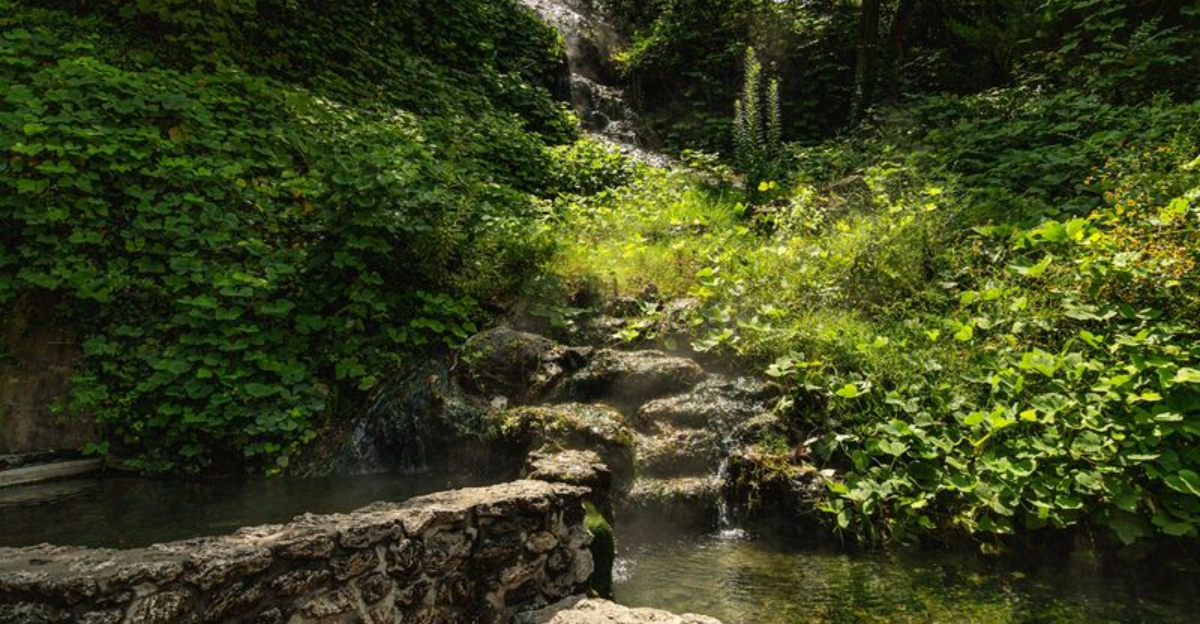
After crisscrossing the country in search of awe-inspiring landscapes and soul-stirring moments, I’ve wandered through towering peaks, red-rock canyons, and ancient forests. But tucked away in central Arkansas lies a park unlike any other – a place where nature and history soak into your bones, quite literally.
While others chase geysers and granite cliffs, I found something quieter but equally profound in Hot Springs National Park. It’s not the park you expect to love – but it just might be the one you remember most.
1. My National Park Journey
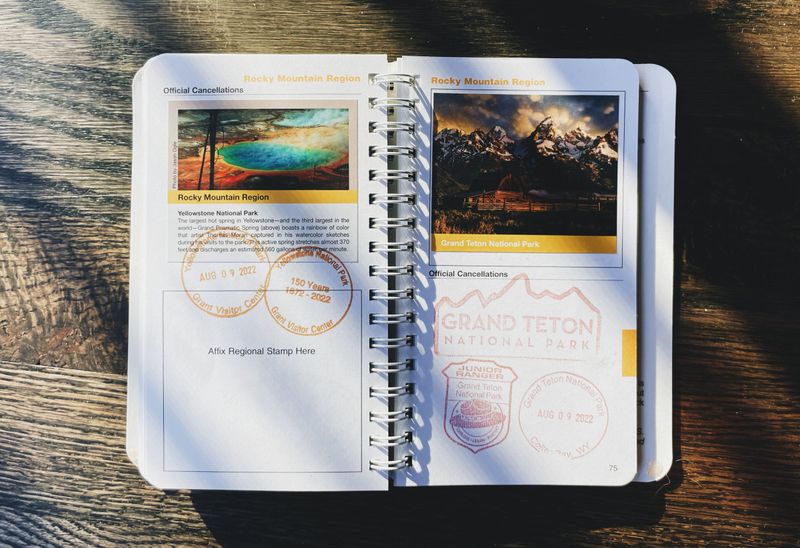
Traversing dusty desert trails and alpine meadows across America has been my passion for over a decade. Thirty-nine parks later, I’ve witnessed everything from erupting geysers to thousand-year-old trees.
Each national park tells a unique story about our country’s natural heritage. My experiences range from crowded summer visits to peaceful off-season explorations when I had magnificent vistas all to myself.
2. Rethinking National Park Expectations
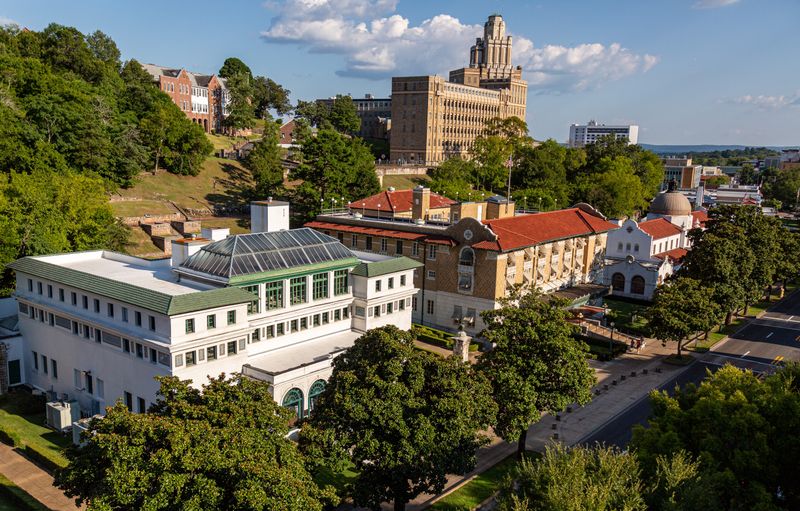
Most visitors picture vast wilderness, towering mountains, and reservation systems when planning national park trips. These mental images often involve extensive planning and remote locations.
Hot Springs breaks this conventional mold entirely. Instead of isolation, you’ll find yourself in an urban setting where the park seamlessly integrates with city life – no advanced reservations or entry fees required.
3. Hot Springs: A City-Centric Oasis
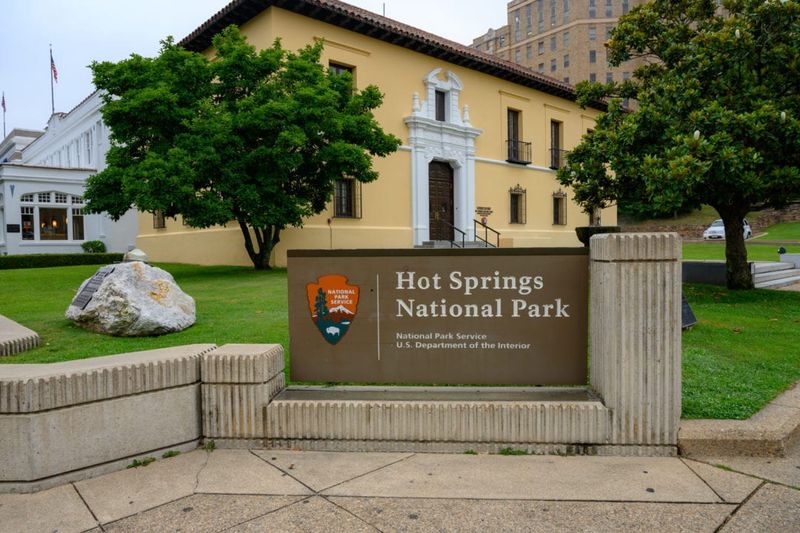
Nestled within an actual city lies one of America’s smallest national parks. The iconic entrance sign stands proudly on Central Avenue, marking the boundary between urban life and protected land.
Hot Springs National Park occupies just 5,550 acres in Arkansas. Its accessibility revolutionizes the typical park experience – you can literally step from a downtown sidewalk into a national park without paying a single dollar.
4. Beyond Trails: Historic Bathhouse Row
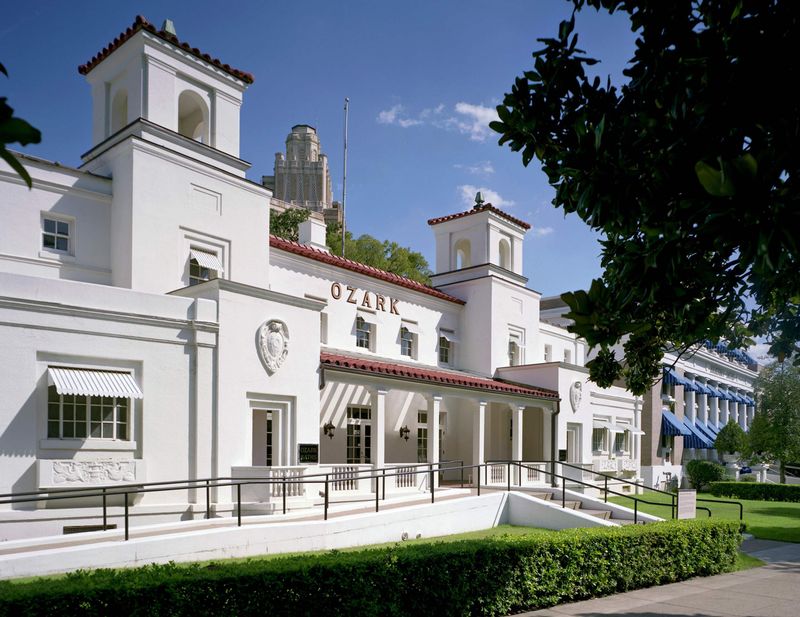
While 26 miles of hiking trails weave through forested hillsides, they’re not the main attraction. The park’s heart beats along Bathhouse Row, where eight magnificent structures stand as monuments to America’s first health tourism destination.
These elegant bathhouses, built between 1892 and 1923, once catered to wealthy visitors seeking healing mineral waters. Today, they house museums, a visitor center, and even modern wellness facilities still offering therapeutic soaks.
5. Fordyce Bathhouse: Time Capsule Of Luxury
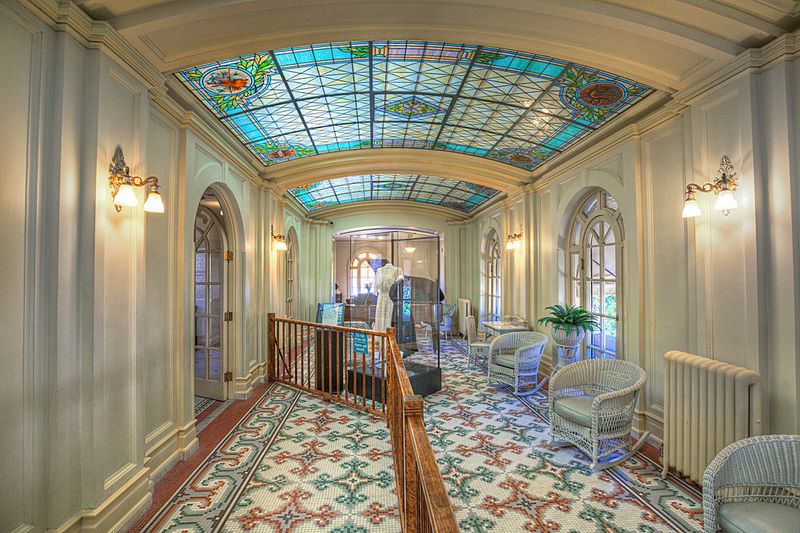
Marble floors gleam beneath stained glass ceilings in this meticulously restored 1915 bathhouse. Stepping inside feels like traveling back to America’s Gilded Age.
The Fordyce now serves as the park’s visitor center. Its three floors showcase original massage rooms, a gymnasium with vintage equipment, and elaborate bathing facilities where the wealthy once sought healing waters for everything from arthritis to syphilis.
6. Thermal Waters: Nature’s Gift
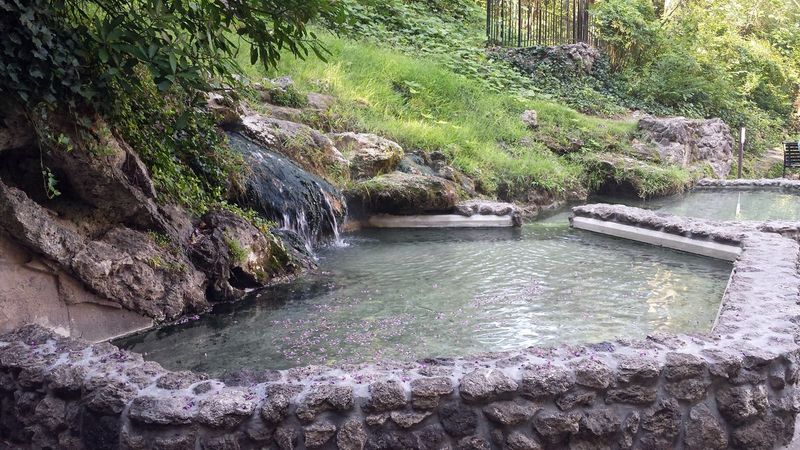
Rain falling on nearby mountains takes a 4,000-year journey through the earth before emerging at a steamy 143°F. These mineral-rich waters flow from fountains throughout the park, free for anyone to collect.
Locals regularly fill jugs with this pristine water, believing in its healing properties. The thermal springs produce nearly a million gallons daily – the same waters that have drawn visitors for centuries, now protected as a national treasure.
7. Superior Bathhouse Brewery: Park Pints

Raise a glass inside the only brewery operating within America’s national park system! The Superior Bathhouse closed as a bathing facility in 1983 but found new life as a craft brewery.
Their unique claim to fame? They brew beer using the park’s thermal spring water. Sipping their creations while sitting in a historic bathhouse offers a one-of-a-kind experience that perfectly represents this park’s blend of heritage and modern enjoyment.
8. Accessibility: Parks For Everyone
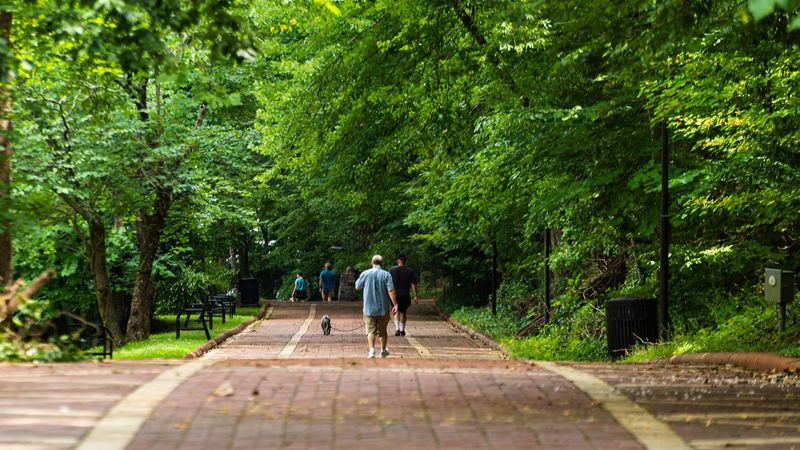
Many national parks require significant planning, expensive accommodations, and challenging travel. Hot Springs flips this script completely with its downtown location and free entry.
This accessibility makes the park uniquely democratic. Visitors of all physical abilities, economic backgrounds, and time constraints can experience a national park without barriers. The paved Grand Promenade offers an accessible walking path with beautiful views and historic sites.
9. Perfect Balance Of Nature And Civilization
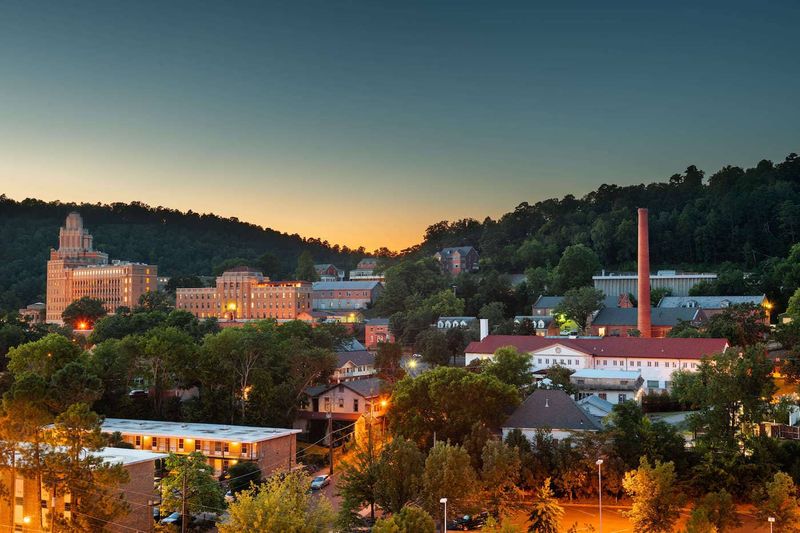
Morning hikes through misty forests can be followed by afternoon spa treatments and evening dining – all within the same park boundaries. This harmony between wilderness and amenities creates a uniquely versatile experience.
Hot Springs strikes a perfect balance few other parks achieve. You can commune with nature on quiet trails, then explore museums, restaurants, and shops without ever leaving park grounds – a convenience impossible at remote wilderness parks.
10. Practical Tips For Visitors
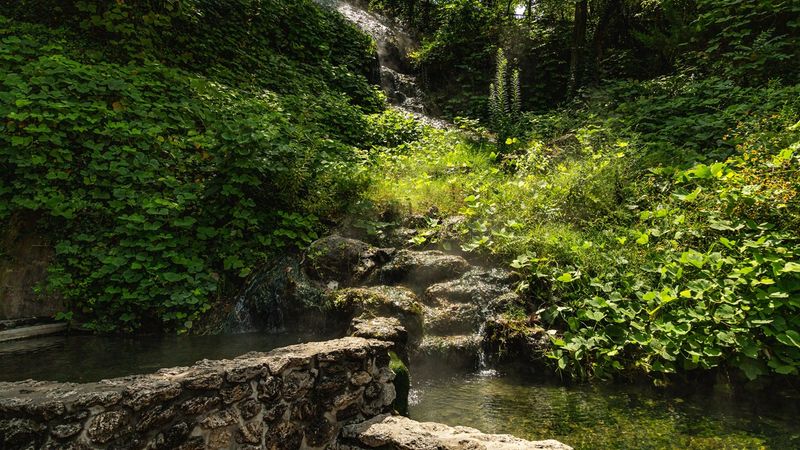
Fall showcases vibrant foliage while avoiding summer’s humidity and winter’s occasional closures. A perfect visit combines morning hiking on the Sunset Trail followed by afternoon exploration of the Fordyce Bathhouse.
Reserve a modern thermal bath experience at the Quapaw or Buckstaff bathhouses – they’re the only operational bathing facilities. End your day with dinner and locally-brewed beer at Superior Bathhouse Brewery, the perfect culmination of your park experience.
11. Why Hot Springs Stands Out
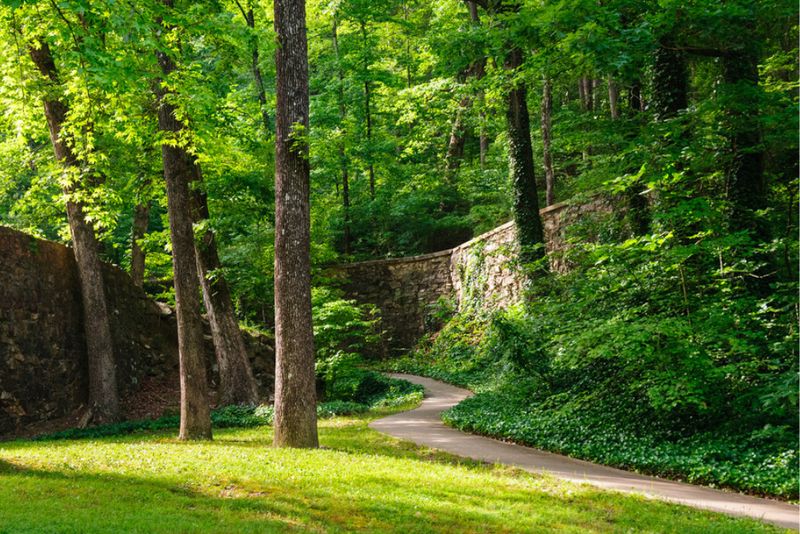
Among 63 national parks, Hot Springs occupies a category all its own – where cultural heritage and natural wonders blend seamlessly. The park preserves both geological marvels and American bathing culture history.
Its urban setting makes it the most accessible national park experience available. While Yellowstone wows with dramatic geysers and Yosemite impresses with towering cliffs, Hot Springs charms with its human story – how generations have sought healing and rejuvenation from these thermal waters.
